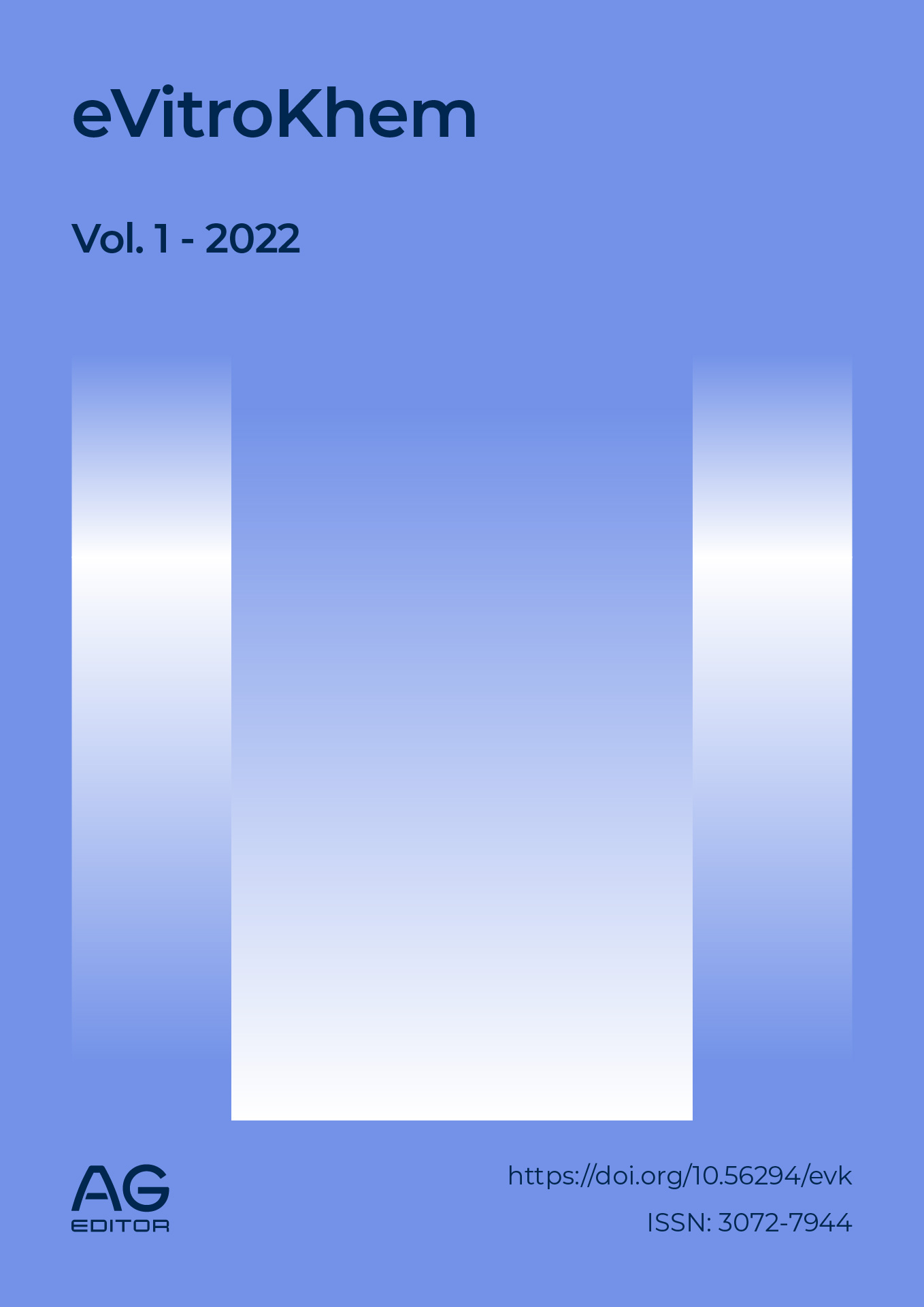Atmospheric pollution by PM 2.5 and microplastics: risks and scientific advances
DOI:
https://doi.org/10.56294/evk202239Keywords:
PM2.5, microplastics, public health, atmospheric pollution, environmental monitoringAbstract
Introduction: Pollution by fine particulate matter (PM2.5) and microplastics (PMs) appeared as a growing environmental and public health problem. PM2.5 particles, with a diameter of less than 2.5 μm, penetrated deeply into the respiratory system, while PMs, plastic fragments smaller than 5 mm, acted as carriers of pollutants. Scientific evidence indicated that their combination could increase respiratory, cardiovascular and oncological risks.
Development: International and local studies reported variable concentrations of PM2.5, from low values in Villavicencio and Tarapoto to critical levels in Shanghai, New Delhi and Brazilian cities, where WHO recommendations were widely exceeded, especially in winter. Research such as that of Zhu et al. and Abbasi identified PMs in PM2.5 fractions, using techniques such as FTIR spectroscopy and scanning electron microscopy (SEM/EDS). The main sources were documented to include transportation, industrial emissions, domestic combustion and degradation of major plastics. Meteorological factors such as temperature, humidity and wind speed influenced particle dispersion. Spatial and temporal variability evidenced the need for integrated and accurate monitoring systems.
Conclusions: The interaction between PM2.5 and PMs generated a complex environmental risk scenario, requiring public policies to reduce emissions and regulate the use of plastics. Methodological advances improved detection, although limitations persisted in understanding their chronic effects. Evidence supported that early and coordinated action was key to mitigate impacts on health and the environment.
References
Oroumiyeh F, Zhu Y. Brake and tire particles measured from on-road vehicles: Effects of vehicle mass and braking intensity [Internet]. Atmos Environ (1994). 2021 Dec;12:100121. [cited 2022 Jan 7]. Available from: https://doi.org/10.1016/j.aeaoa.2021.100121 DOI: https://doi.org/10.1016/j.aeaoa.2021.100121
Kelly FJ, Fussell JC. Toxicity of airborne particles—established evidence, knowledge gaps and emerging areas of importance [Internet]. Philos Trans A Math Phys Eng Sci. 2020 Sep 28;378(2183):20190322. [cited 2022 Jan 9]. Available from: https://doi.org/10.1098/rsta.2019.0322 DOI: https://doi.org/10.1098/rsta.2019.0322
Evangeliou N, Grythe H, Klimont Z, Heyes C, Eckhardt S, Lopez-Aparicio S, et al. Atmospheric transport is a major pathway of microplastics to remote regions [Internet]. Nat Commun. 2020 Jul 14;11:3381. [cited 2022 Jan 9]. Available from: https://doi.org/10.1038/s41467-020-17201-9 DOI: https://doi.org/10.1038/s41467-020-17201-9
Provencher JF, Ammendolia J, Rochman CM, Mallory ML. Proceed with caution: The need to raise the publication bar for microplastics research [Internet]. Sci Total Environ. 2020 Dec 15;748:141426. [cited 2022 Jan 15]. Available from: https://doi.org/10.1016/j.scitotenv.2020.141426 DOI: https://doi.org/10.1016/j.scitotenv.2020.141426
Gasperi J, Wright SL, Dris R, Collard F, Mandin C, Guerrouache M, et al. Microplastics in air: Are we breathing it in? [Internet]. Curr Opin Environ Sci Health. 2018 Feb;1:1–5. [cited 2022 Jan 15]. Available from: https://doi.org/10.1016/j.coesh.2017.10.002
Zhang Y, Kang S, Allen S, Allen D, Gao T, Sillanpää M. Atmospheric microplastics: A review on current status and perspectives [Internet]. Earth Sci Rev. 2020 Apr;203:103118. [cited 2022 Jan 15]. Available from: https://doi.org/10.1016/j.earscirev.2020.103118 DOI: https://doi.org/10.1016/j.earscirev.2020.103118
Wright SL, Ulke J, Font A, Chan KL, Kelly FJ. Atmospheric microplastic deposition in an urban environment and an evaluation of transport [Internet]. Environ Int. 2020 Mar;136:105411. [cited 2022 Feb 3]. Available from: https://doi.org/10.1016/j.envint.2019.105411 DOI: https://doi.org/10.1016/j.envint.2019.105411
Prata JC, da Costa JP, Lopes I, Duarte AC, Rocha-Santos T. The importance of contamination control in airborne fibers and microplastic sampling: Experiences from indoor and outdoor air sampling in Aveiro, Portugal. Mar Pollut Bull. 2020 Oct;159:111522. doi:10.1016/j.marpolbul.2020.111522. DOI: https://doi.org/10.1016/j.marpolbul.2020.111522
Gasperi J, Wright SL, Dris R, Collard F, Mandin C, Guerrouache M, et al. Microplastics in air: Are we breathing it in? Curr Opin Environ Sci Health. 2018 Feb;1:1-5. doi:10.1016/j.coesh.2017.10.002. DOI: https://doi.org/10.1016/j.coesh.2017.10.002
Beaurepaire M, Dris R, Gasperi J, Tassin B. Microplastics in the atmospheric compartment: a comprehensive review on methods, results on their occurrence and determining factors. Curr Opin Food Sci. 2021 Oct;41:159-168. doi:10.1016/j.cofs.2021.04.010. DOI: https://doi.org/10.1016/j.cofs.2021.04.010
Daiber A, Kuntic M, Oelze M, Abou-El-Ardat K, Steven S, Schulz E, et al. Effects of air pollution particles (ultrafine and fine particulate matter) on mitochondrial function and oxidative stress – Implications for cardiovascular and neurodegenerative diseases. Arch Biochem Biophys. 2020 Dec 15;696:108662. doi:10.1016/j.abb.2020.108662. DOI: https://doi.org/10.1016/j.abb.2020.108662
Prata JC. Airborne microplastics: Consequences to human health? Environ Pollut. 2018 Mar;234:115-126. doi:10.1016/j.envpol.2017.11.043. DOI: https://doi.org/10.1016/j.envpol.2017.11.043
Fan C, Wu H, Zeng G, Li H, Zhou Y, Wang Z, et al. Microplastic constituent identification from admixtures by Fourier-transform infrared (FTIR) spectroscopy: The use of polyethylene terephthalate (PET), polyethylene (PE), polypropylene (PP), polyvinyl chloride (PVC) and nylon (NY) as the model constituents. Environ Technol Innov. 2021 Aug;23:101798. doi:10.1016/j.eti.2021.101798. DOI: https://doi.org/10.1016/j.eti.2021.101798
Stockin KA, Orams MB, Bollard B, Ventre K, Wiseman N, Moore MJ, et al. Fourier transform infrared (FTIR) analysis identifies microplastics in stranded common dolphins (Delphinus delphis) from New Zealand waters. Mar Pollut Bull [Internet]. 2021 Dec;173:113084. [citado 2022 Feb 20]. Disponible en: https://doi.org/10.1016/j.marpolbul.2021.113084 DOI: https://doi.org/10.1016/j.marpolbul.2021.113084
Liao Z, Ji X, Ma Y, Lv B, Huang W, Zhu X, et al. Airborne microplastics in indoor and outdoor environments of a coastal city in Eastern China. J Hazard Mater [Internet]. 2021 Sep 5;417:126007. [citado 2022 Feb 22]. Disponible en: https://doi.org/10.1016/j.jhazmat.2021.126007 DOI: https://doi.org/10.1016/j.jhazmat.2021.126007
Akdogan Z, Guven B. Microplastics in the environment: A critical review of current understanding and identification of future research needs. Environ Pollut [Internet]. 2019 Nov;254:113011. [citado 2022 Feb 22]. Disponible en: https://doi.org/10.1016/j.envpol.2019.113011 DOI: https://doi.org/10.1016/j.envpol.2019.113011
Correia Prata J, da Costa JP, Lopes I, Duarte AC, Rocha-Santos T. Environmental exposure to microplastics: An overview on possible human health effects. Sci Total Environ [Internet]. 2020 Feb 1;702:134455. [citado 2022 Feb 25]. Disponible en: https://doi.org/10.1016/j.scitotenv.2019.134455 DOI: https://doi.org/10.1016/j.scitotenv.2019.134455
Rahman A, Sarkar B, Yadav OP, Achari G, Slobodnik J. Potential human health risks due to environmental exposure to nano- and microplastics and knowledge gaps: A scoping review. Sci Total Environ [Internet]. 2021 Mar 1;757:143872. [citado 2022 Feb 26]. Disponible en: https://doi.org/10.1016/j.scitotenv.2020.143872 DOI: https://doi.org/10.1016/j.scitotenv.2020.143872
Habibi N, Kazemi SM, Shams M. Microplastics in the atmosphere: a review. J Environ Expo Assess [Internet]. 2022; [citado 2022 Feb 26]. Disponible en: https://doi.org/10.20517/jeea.2021.07 DOI: https://doi.org/10.20517/jeea.2021.07
Xie Y, Chen J, Li J, Zhang Y, Guo Y, Zhao Y, et al. Inhalable microplastics prevails in air: Exploring the size detection limit. Environ Int [Internet]. 2022 Mar;162:107151. [citado 2022 Feb 26]. Disponible en: https://doi.org/10.1016/j.envint.2022.107151 DOI: https://doi.org/10.1016/j.envint.2022.107151
Uddin S, Fowler SW, Saeed T, Al-Ghadban AN, Al-Shamroukh D, Zaki N, et al. A preliminary assessment of size-fractionated microplastics in indoor aerosol—Kuwait’s baseline. Toxics [Internet]. 2022 Feb;10(2):71. [citado 2022 Feb 28]. Disponible en: https://doi.org/10.3390/toxics10020071 DOI: https://doi.org/10.3390/toxics10020071
Hu K, Gong M, Feng S, Gao S, Zhou J, Zhu L, et al. Emerging microplastics in the environment: Properties, distributions, and impacts. Chemosphere. 2022;297:134118. doi:10.1016/j.chemosphere.2022.134118 DOI: https://doi.org/10.1016/j.chemosphere.2022.134118
Luo Z, Mai L, Li H, Liu Y, Zhang D, Wong CS, et al. Environmental occurrence, fate, impact, and potential solution of tire microplastics: Similarities and differences with tire wear particles. Sci Total Environ. 2021;795:148902. doi:10.1016/j.scitotenv.2021.148902 DOI: https://doi.org/10.1016/j.scitotenv.2021.148902
Szewc K, Graca B, Dołęga A. Atmospheric deposition of microplastics in the coastal zone: Characteristics and relationship with meteorological factors. Sci Total Environ. 2020;143272. doi:10.1016/j.scitotenv.2020.143272 DOI: https://doi.org/10.1016/j.scitotenv.2020.143272
Amato-Lourenço LF, Carvalho-Oliveira R, Júnior GR, dos Santos Galvão L, Ando RA, Mauad T. Airborne microplastics and SARS-CoV-2 in total suspended particles in the area surrounding the largest medical centre in Latin America. Environ Pollut. 2022;292:118299. doi:10.1016/j.envpol.2021.118299 DOI: https://doi.org/10.1016/j.envpol.2021.118299
Ljubimova JY, Braubach O, Patil R, Chumakova A, Chen Z, Kleinman MT, et al. Coarse particulate matter (PM2.5–10) in Los Angeles Basin air induces expression of inflammation and cancer biomarkers in rat brains. Sci Rep. 2018;8(1):5708. doi:10.1038/s41598-018-23885-3 DOI: https://doi.org/10.1038/s41598-018-23885-3
Amato-Lourenço LF, dos Santos Galvão L, de Weger LA, Hiemstra PS, Vijver MG, Mauad T. An emerging class of air pollutants: Potential effects of microplastics to respiratory human health? Sci Total Environ. 2020;749:141676. doi:10.1016/j.scitotenv.2020.141676 DOI: https://doi.org/10.1016/j.scitotenv.2020.141676
Abbass RA, Kumar P, El-Gendy A. Car users exposure to particulate matter and gaseous air pollutants in megacity Cairo. Sustain Cities Soc. 2020;56:102090. doi:10.1016/j.scs.2020.102090 DOI: https://doi.org/10.1016/j.scs.2020.102090
Chen G, Feng Q, Wang J. An overview of analytical methods for detecting microplastics in the atmosphere. TrAC Trends Anal Chem. 2020;130:115981. doi:10.1016/j.trac.2020.115981 DOI: https://doi.org/10.1016/j.trac.2020.115981
Cooper DM, Loxham M. Particulate matter and the airway epithelium: the special case of the underground? Eur Respir Rev. 2019;28(153):190066. doi:10.1183/16000617.0066-2019 DOI: https://doi.org/10.1183/16000617.0066-2019
attributable burden of disease in Iran from 1990 to 2016. Environ Pollut. 2019;255:113173. doi:10.1016/j.envpol.2019.113173. DOI: https://doi.org/10.1016/j.envpol.2019.113173
Chen R, Yin P, Meng X, Liu C, Wang L, Xu X, et al. Associations between coarse particulate matter air pollution and cause-specific mortality: a nationwide analysis in 272 Chinese cities. Environ Health Perspect. 2019;127(1):017008. doi:10.1289/EHP2711. DOI: https://doi.org/10.1289/EHP2711
Bai Y, Sun Q. Fine particulate matter air pollution and atherosclerosis: mechanistic insights. Biochim Biophys Acta Gen Subj. 2016;1860(12):2863-8. doi:10.1016/j.bbagen.2016.04.030. DOI: https://doi.org/10.1016/j.bbagen.2016.04.030
Velasquez RMA, Romero YL, Noel J. Citizen science approach for spatiotemporal modelling of air pollution quality and traffic in Lima, Peru. In: 2019 IEEE Sciences and Humanities International Research Conference (SHIRCON). IEEE; 2019. doi:10.1109/SHIRCON48091.2019.9024879. DOI: https://doi.org/10.1109/SHIRCON48091.2019.9024879
European Respiratory Society. Clean air for healthy lungs – an urgent call to action: European Respiratory Society position on the launch of the WHO 2021 Air Quality Guidelines. Eur Respir J. [Internet]. [citado 27 Abr 2022];58(6):2102447. Disponible en: https://erj.ersjournals.com/content/58/6/2102447 DOI: https://doi.org/10.1183/13993003.02447-2021
Siciliano B, Carvalho G, Arbilla G. The updated Brazilian national air quality standards: a critical review. J Braz Chem Soc. 2020;31(3):523-35. doi:10.21577/0103-5053.20190212. DOI: https://doi.org/10.21577/0103-5053.20190212
Published
Issue
Section
License
Copyright (c) 2022 Rodrigo Dávid Colichón Carranza, Alexis Torres-del Aguila, Carlos Mauricio Lozano Carranza, Andi Lozano Chung (Author)

This work is licensed under a Creative Commons Attribution 4.0 International License.
The article is distributed under the Creative Commons Attribution 4.0 License. Unless otherwise stated, associated published material is distributed under the same licence.






